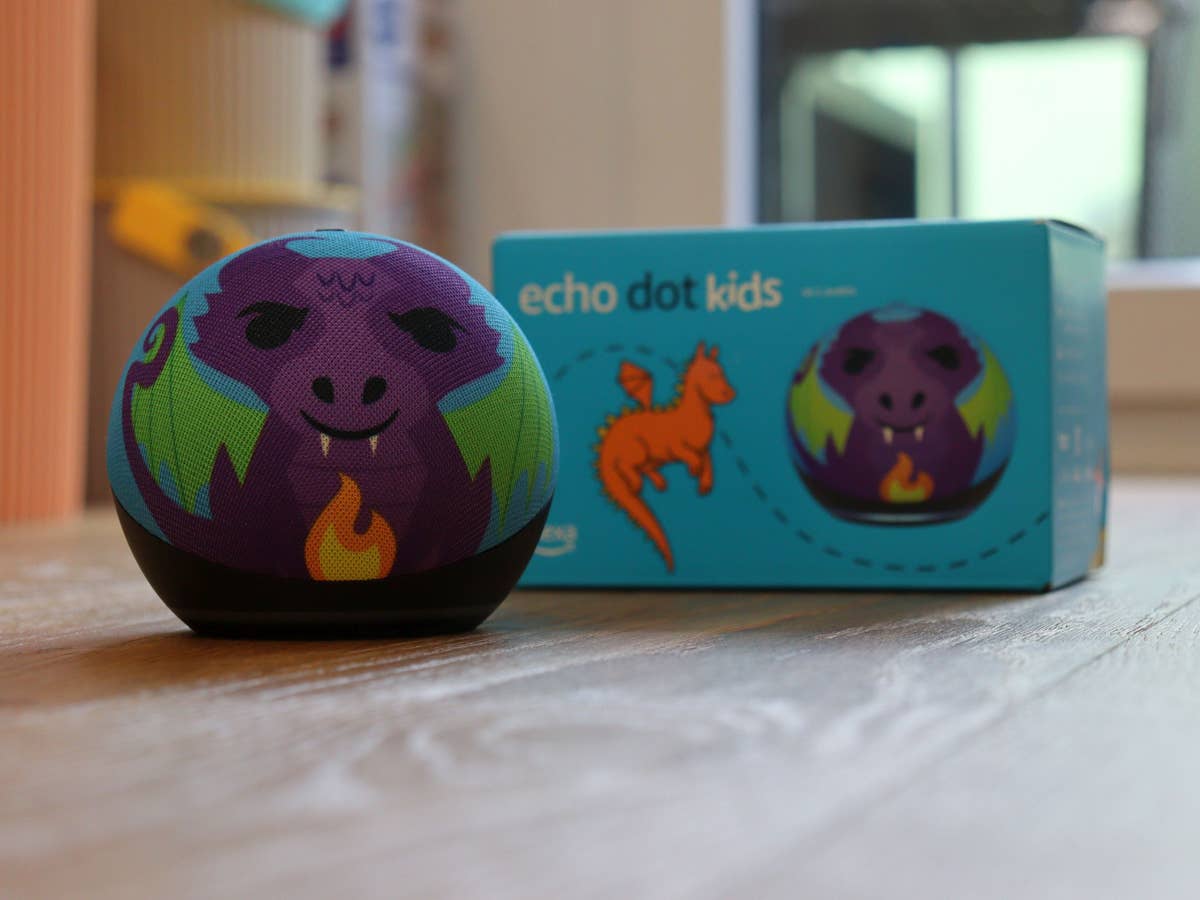Alexa is now also available for children. With the Echo Dot Kids, the smart language assistant should also move into the children’s room without the child being able to do mischief. How well does this work? We tested the Echo Dot Kids – with one child.

TABLE OF CONTENTS
1-Tried the Amazon Echo Dot Kids
2-Second attempt – a few weeks later
3-Children’s echo ignores adults
4-Conclusion: Amazon Echo Dot Kids is not for small children
Let’s start like a normal user: with the setup. Setting up Amazon ‘s Echo Dot Kids requires Alexa to learn the child’s voice. The voice ID must be set up for this. This is done on the one hand via the Alexa app on the parents’ smartphone and the simultaneous presence of the child. The app asks the child to repeat certain sentences. The problem in our test: The almost five-year-old boy tried out the setup routine several times with his dad.
TRIED THE AMAZON ECHO DOT KIDS
But even the training sentence “Alexa, let’s play something” was not recognized by Alexa despite repeated attempts. Either Alexa didn’t even recognize the trigger word Alexa or it was supposedly too loud in the area – in a completely quiet apartment. Even the crutch that the father spoke the trigger word “Alexa” and the son repeated the sentence did not help. Alexa didn’t recognize the sentence. Possibly also because of the word “play” with the “sh” sound. This is a big problem for many children when learning to speak.
The result of the many failures: Our test child lost interest in Alexa Kids and turned away disappointed. Amazon itself advertises the smart speaker for children between the ages of three and twelve. However, we doubt that this counts as an unqualified assessment. The hurdle is that Alexa has to recognize the child. So the child has to adapt to the product. In addition to possible language problems, a child also has a natural reluctance to speak to strangers on command. This also applies to technology, as we have noticed.
Amazon would have solved it better if the Echo Dot Kids’ microphone “listens in” at the moment when the parent opens the routine on the smartphone and records what the child is saying. Then the product would adapt to the child – the much smarter version.
SECOND ATTEMPT – A FEW WEEKS LATER
The frustration of the child ran deep and only a few weeks later did we dare a second attempt. The child was too annoyed by the first attempts. The child-friendly designed Echo Dot with a dragon design was frustrated by being in a corner. During the waiting period, the child’s speech also improved. Nevertheless, the installation was not without worries this time either – but it was successful. That Alexa couldn’t pronounce the child’s name correctly – for free.
Even if the setup worked this time, our child and Alexa didn’t want to develop a real friendship. Alexa simply refused commands like “Alexa, play radio teddy”. Specially advertised Alex Kids apps require specific commands that a five-year-old can find difficult to remember. Since writing down the commands for a child who is not yet able to read is of no use, interest in the Echo Dot in the dragon design quickly faded. The idea that the child can play and learn with the language assistant without mom and dad fails.
The child’s mother spoke up during the test: Alexa has recently stopped understanding her in the living room and refuses the commands to control the smart home. The solution to the riddle: Her voice had never been trained on the Amazon system and now the artificial intelligence assumed that the female voice belonged to the child. But the voices really don’t have much to do with each other. The child profile, on the other hand, was not allowed to control the smart home at the time. These settings are possible via an Alexa parent dashboard .
CHILDREN’S ECHO IGNORES ADULTS
But even without these vocal confusions, no friendship developed between the parents and the Echo Dot for children either. Because the small smart ball refused commands to control the smart home even if an adult with a stored voice profile spoke it. In our opinion, the children’s echo dot generally refused to communicate with adults. And so we followed our child’s assessment of Alexa for children: “It can go again”.
The Echo Dot for kids costs a little more than the “normal” Echo Dot at 69.99 euros , but the Amazon subscription Kids+ with its content for listening and learning is included for a year. This may work for older children, but for our five-year-old the content was not interesting or not consistently accessible due to the difficult voice commands. After one year, the subscription costs EUR 4.99 per month – in addition to the Prime subscription.
CONCLUSION: AMAZON ECHO DOT KIDS IS NOT FOR SMALL CHILDREN
Of course, this test is purely subjective. But at least our impression is that the Echo Dot Kids is not for small children. With older children, the question arises as to whether the special version of the Echo Dot is really needed. Surely you “save” the costs for Kids+ for a year and a two-year worry-free guarantee promises that dropped devices will be replaced. But isn’t a normal Echo Dot enough – if it has to be a language assistant in the children’s room? He also offers enough skills for children. The fact that they don’t do anything stupid with the device should be part of the children’s media skills and education.
Ultimately, however, it is also clear that every child and every household is different and there may be children for whom the Echo Dot Kids is just the right device. After all, there is a 30-day money-back guarantee if you don’t like it.


